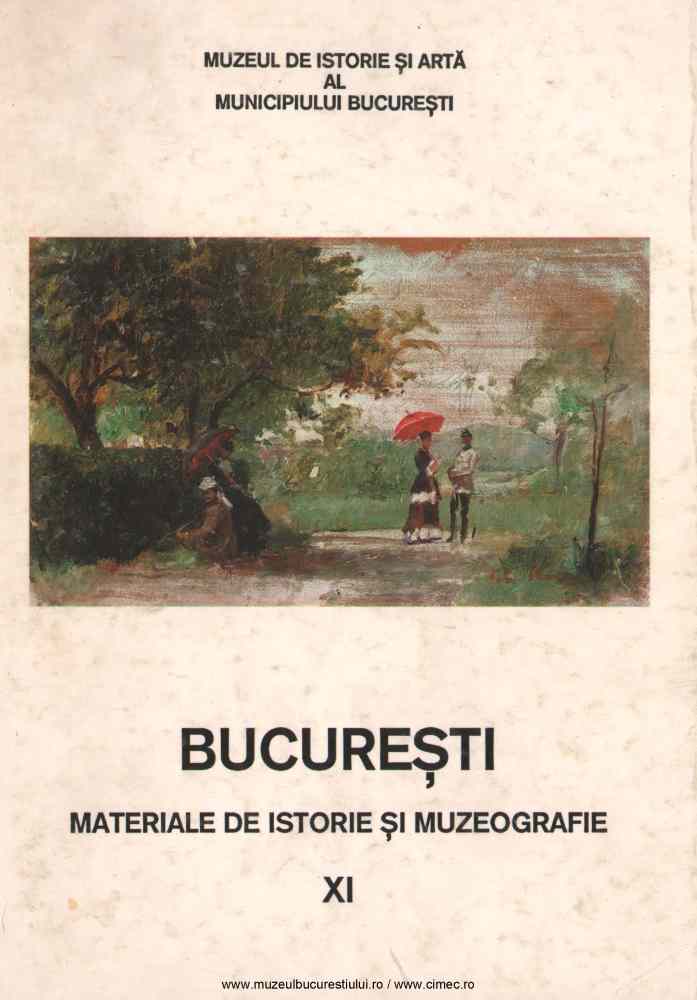
Mereu în actualitate: Arcul de Triumf
| Autori |
|
| Secţiunea |
|
| Limba de redactare | română |
|
Descriptori
|
|
| Excerpt | For our country, the end of the First World War signifies the fulfillment of a century-old aspiration, the setting of the Romanian national unitary state. The inter-war period represents, for Bucharest - capital of the Great Romania - a real outburst within the building field, a wide variety of thematic and stylistic tendencies being rendered evident. The carrying on of the architect Ion Mincu's school, the development and the monumentalization of the neo-Romanian style, the impact of the modern style - are only some of the stylistic architectural elements harmoniously implanted and assimilated within the town-planning structure of the inter-war Bucharest. The meaning of the Great Union on December 1, 1918 - beginning of a new historical period in Romania - receives a pious and at the same time a monumental materialization in building, between 1922-1936, the Arch of Triumph, on the Kiseleff Road. Work of the eminent architect, Professor Petre Antonescu, the Arch of Triumph is built using the classical diagram of one opening arches, taking over the outline of a predecessor built with perishable materials, between 1877-1878, dedicated to the victory in the Independence War, and having a strictly festive part. The Arch of Triumph was built in two stages. The first stage - 1922 – consist in building the concrete structure and the decorative adornment, and it is occasioned by the Great Union celebration and by the coronation of King Ferdinand as King of Great Romania. During the next stage, completed in 1936, when, as a matter of fact, it is inaugurated, the Arch of Triumph fills, as in architect Petre Antonescu's diagrams, its concrete structure with the brick laying structure and the stone plates. The monument benefits by a rich and elegant decoration, with stylish elements of old Romanian architecture (frieze, cable mouldings, cornices, a.s.o.). Renowned artists as: I. Jalea, C. Baraschi and professors A. Călinescu and Mac Constantinescu collaborated at the adornment of the Arch of Triumph. Preserved of history, the Arch of Triumph has also its own history, not always a happy one. Between 1948-1949, the Arch of Triumph is a victim of the historical and political contortions the country has to suffer due to the communist regime setting up. The Arch of Triumph loses, through cutting, the texts of the side panels and the effigies on the South side, representing the messages and the faces of King Ferdinand and Queen Maria. The slots with the effigies were covered by floral rosettes. During 1960-1961 maintenance work is performed inside the Arch, while during 1980-1982 extensive work is necessary to repair and restore the monument. Due to a high degree of deterioration because of negligence and arbitrary usage by institutions (cinematography, television, a.s.o.) as well as by private persons, the monument didn't benefit, then, by a minimum protection, either from an administrative authority or from a cultural one, although it was registered on the historical monuments list. Beginning with the stone repairing and maintenance work, despite all the taken steps, the necessary approvals couldn't be obtained in order to restore, at least partially, the before 1948 image of the monument, as it had been conceived by the author. The essential principles of respect and protection that any historical and architectural monument must benefit, were violated for the second time, by political abuse. However, a repair and a preservation of the monument were performed so that an open window was left for hope. That's why it is absolutely necessary that the Arch of Triumph problem should be discussed by all the official persons as well as by architects, art and culture experts. The Romanians' symbol of sacrifice for their country during the First World War must not be "forgotten" again and must be treated only with love. |
| Paginaţia | |< << 179-185 >> >| |
| Descarcă fişierul | |
| Titlul volumului de apariție | |
| Editura | Publicat de: Museion |
| Loc publicare | Bucureşti |




